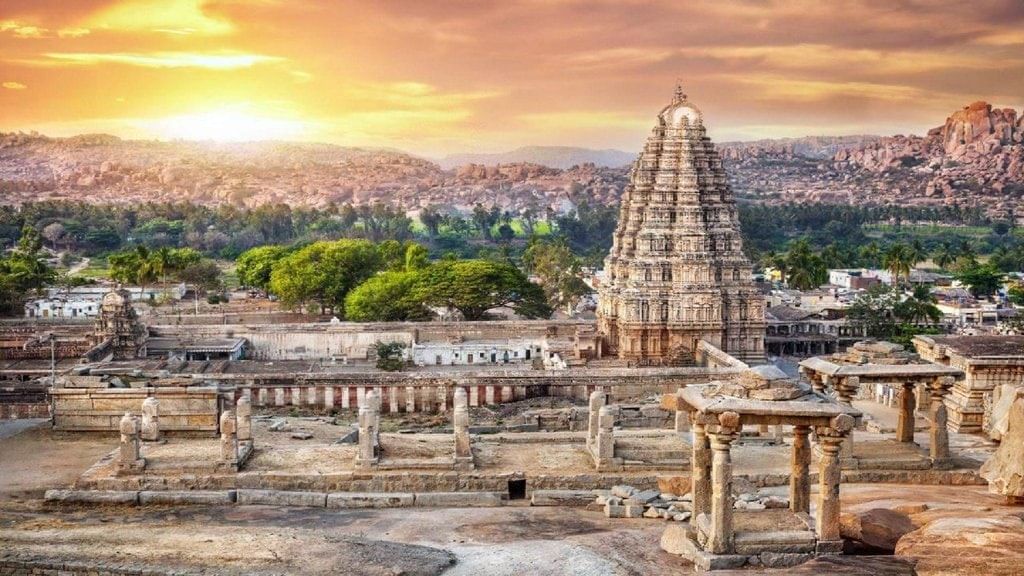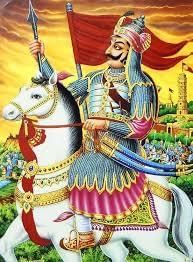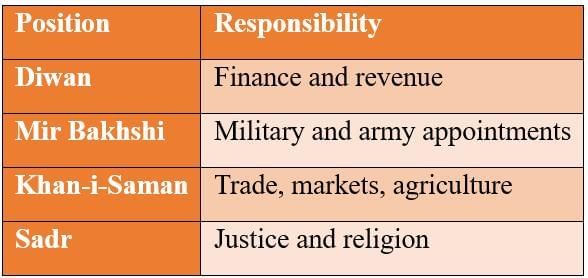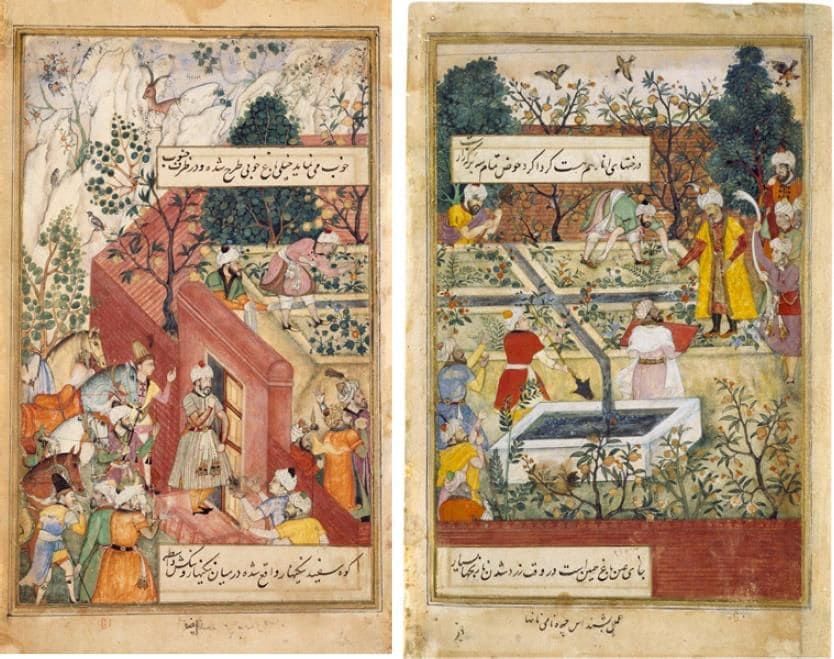Class 8 Exam > Class 8 Notes > Social Studies (SST) Class 8 > Key Concepts: Reshaping India's Political Map
Key Concepts: Reshaping India's Political Map | Social Studies (SST) Class 8 PDF Download
| Table of contents |

|
| Rise and Fall of the Delhi Sultanate |

|
| The Vijayanagar Empire |

|
| The Mughals |

|
| Resistance to the Mughals |

|
| Administering India |

|
| People's Lives |

|
Rise and Fall of the Delhi Sultanate
- Founded after Prithviraj Chauhan’s defeat in 1192.
- Ruled by five successive Turkic-Afghan dynasties:
1. Mamluks (Slave dynasty)
2. Khiljis
3. Tughlaqs
4. Sayyids
5. Lodis - Expanded into north and central India through continuous warfare.
- Military efforts involved heavy expenditure on:
- Weapons
- Soldier
- War animals
- Fortifications and infrastructure - Marked by violent successions and short reigns (average of ~9 years).
- Muhammad bin Tughlaq’s ambitious reforms.

The conquest era saw:
- Destruction of temples and seats of learning.
- Iconoclasm (breaking of idols).
- Strict imposition of the jizya tax on non-Muslims.
Decline
- Timur’s invasion in 1398 devastated Delhi.
- Weakened the Sultanate, paving the way for regional kingdoms and, later, the rise of the Mughals.

Resistance to the Delhi Sultanate
Resistance to the Delhi Sultanate by regional kingdoms:
- Eastern Gangas (Sun Temple, Konark)
- Musunuri Nayakas (Warangal)
- Hoysalas (later Vijayanagara)
- Bahmani & other Deccan Sultanates
- Rajputs (Mewar, Rana Kumbha, forts like Kumbhalgarh)
The Vijayanagar Empire
- Vijayanagara Empire: Founded in the 14th century by Harihara & Bukka, independent of Delhi.
- Known for Hampi, grand temples and palaces, and strong cultural & military power.
 Hampi Ruins
Hampi Ruins
Krishnadevaraya
- Krishnadevaraya (16th century): Expanded the empire, promoted arts, poetry, and scholarship.
- Built grand temples like the Vitthala Temple with musical pillars.
- Welcomed foreign traders (e.g., Portuguese) and maintained strong diplomacy.
- After his death, the empire fragmented following the Battle of Talikota (1565) against the Deccan Sultanates.
Question for Key Concepts: Reshaping India's Political MapTry yourself: Who were the founders of the Vijayanagara Empire?View Solution
The Mughals
- Mughal Empire: Founded in 1526 by Babur after defeating Ibrahim Lodi at Panipat, it introduced gunpowder warfare.
- Babur: The founder of the Mughal Empire, a Turkic-Mongol ruler from Central Asia who appreciated India's wealth and decided to build an empire there.
- Humayun: Babur's son, who struggled to maintain control of the empire but was later helped by Sher Shah Suri, who briefly took over.
- Sher Shah Suri: An Afghan ruler who displaced Humayun temporarily and introduced important reforms before the Mughals regained power.
- Himu (Hemchandra Vikramaditya): A military commander under the Suri regime who briefly captured Delhi but was defeated by Akbar.
 The Great Mughal Emperors
The Great Mughal Emperors
Akbar
- Akbar: Ascended at 13, expanded the empire through military strength, alliances, and religious tolerance.
- Abolished jizya, promoted sulh-i-kul, and included regional leaders in court.
- Introduced the mansabdari system and Todar Mal’s land revenue reforms.
- Encouraged cross-cultural learning, translating Sanskrit texts into Persian.
Aurangzeb
- Seized power after violent succession struggles, ruling for almost 49 years.
- Expanded empire to its greatest territorial extent but faced widespread rebellions.
- Reimposed jizya, banned music and dance in courts, and ordered the demolition of temples.
- His austere and religiously strict policies contributed to the decline post his reign.
Resistance to the Mughals
Surge of the Rajputs
- Rajput clans in Mewar and Marwar fiercely resisted Mughal conquest.
- Rajputs: Warrior clans in northwest India, proud of their traditions; they often fought against invading forces from outside the subcontinent to protect their kingdoms.
- Maharana Pratap: A legendary Rajput ruler of Mewar who refused to accept Mughal rule and fought guerrilla warfare against them from the Aravalli hills.
 Maharana Pratap
Maharana Pratap - Haldighati (1576): A famous battle between Maharana Pratap's forces and the Mughal army; though outnumbered, Maharana Pratap escaped and continued resistance.
- Guerrilla Warfare: A style of fighting using surprise attacks and knowledge of the local terrain, often employed by smaller groups like Maharana Pratap’s forces to fight bigger armies.
The Ahoms
- Migrated from Myanmar to the Brahmaputra valley, developed the paik system, mobilising locals for military and economic duties.
- Used terrain familiarity and guerrilla tactics to defeat the Mughals, notably at the Battle of Saraighat in 1671.
The Rise of the Sikhs
- Founded by Guru Nanak in the 15th century, it promoted equality and compassion.
- Later, Gurus militarised Sikhism in response to Mughal persecution; the martyrdom of Guru Tegh Bahadur symbolised resistance.
- Guru Gobind Singh formed the Khalsa, a martial brotherhood fighting Mughal oppression.
- Maharaja Ranjit Singh unified Sikh confederacies into a strong empire, resisting Mughal and later British incursions.
Administering India
Administration under the Delhi Sultanate
- The political system is centred on the Sultan as an absolute ruler with a council of ministers.
- The iqta system allocated tax collection to nobles (iqtadars) who maintained armies and forwarded revenue.
- Taxes focused heavily on peasants, often collected with cruelty.
The Mughal administrative framework
- Akbar reorganised the administration, introducing specific roles:

- The Mansabdari system graded officials who maintained troops and resources; jagirdars were assigned land for revenue.
- Efficient land surveys and a revenue system by Todar Mal increased state stability.
- While Akbar was relatively tolerant, higher positions generally favoured Muslims and people of foreign origin.
Question for Key Concepts: Reshaping India's Political MapTry yourself: What does administering India involve?View Solution
People's Lives
- Agriculture was the economic backbone with irrigation expansion and multiple crop cultivation.
- Crafts and textiles thrived alongside shipbuilding, and thriving river and overseas trade linked to ports like Calicut and Surat.
- Trade was facilitated by systems like the hundi, enabling credit and fund transfer across regions.
- Temples acted as social, economic, and religious centres, funding infrastructure and trade.
- Despite economic prosperity, many peasants faced high taxation, leading to land loss and bonded labour.
- Frequent warfare caused displacement, but communities of different religions generally coexisted peacefully.
- Cultural traditions persisted, blending indigenous and foreign influences in art, music, literature, and architecture.
 Work of Art showing People's Lives in Mughal era
Work of Art showing People's Lives in Mughal era
The document Key Concepts: Reshaping India's Political Map | Social Studies (SST) Class 8 is a part of the Class 8 Course Social Studies (SST) Class 8.
All you need of Class 8 at this link: Class 8
|
69 videos|431 docs|46 tests
|
FAQs on Key Concepts: Reshaping India's Political Map - Social Studies (SST) Class 8
| 1. What were the key factors that led to the rise of the Delhi Sultanate? |  |
Ans. The rise of the Delhi Sultanate was influenced by several key factors including military conquests, the weakening of local kingdoms, and the establishment of a centralized administration. The strategic location of Delhi, along trade routes, allowed the Sultans to control commerce and collect taxes effectively. Additionally, the use of cavalry and advanced warfare techniques helped the Sultans to expand their territory and maintain power.
| 2. How did the Vijayanagara Empire contribute to Indian culture and society? |  |
Ans. The Vijayanagara Empire played a crucial role in promoting art, architecture, and literature in India. It was known for its magnificent temples and the flourishing of classical music and dance forms. The empire also encouraged trade and agriculture, leading to economic prosperity. The rulers supported scholars and poets, resulting in significant contributions to Kannada and Telugu literature, which enriched the cultural landscape of South India.
| 3. What were the main strategies employed by the Mughals to consolidate their rule in India? |  |
Ans. The Mughals employed various strategies to consolidate their rule, including military might, diplomacy, and administrative reforms. They used marriages to forge alliances with local rulers, which helped in reducing resistance. The establishment of a centralized bureaucracy and a fair tax system improved governance. The Mughals also promoted religious tolerance, which helped to integrate diverse communities within their empire.
| 4. What forms of resistance emerged against Mughal rule in India? |  |
Ans. Resistance against Mughal rule took various forms, including military uprisings, peasant revolts, and the establishment of independent states by local rulers. Notable figures such as Shivaji and the Marathas played a significant role in challenging Mughal authority. Additionally, various religious and cultural movements emerged that sought to address grievances against Mughal policies and assert regional identities.
| 5. How did the administration of India evolve under the different empires? |  |
Ans. The administration of India evolved significantly under the Delhi Sultanate, the Vijayanagara Empire, and the Mughals. The Delhi Sultanate introduced a centralized system of governance, while the Vijayanagara Empire emphasized local autonomy and regional administration. The Mughals further refined administrative practices, creating a complex bureaucratic system that incorporated various cultural elements. All three empires contributed to the development of revenue systems, law, and order, shaping the governance of India.
Related Searches




















